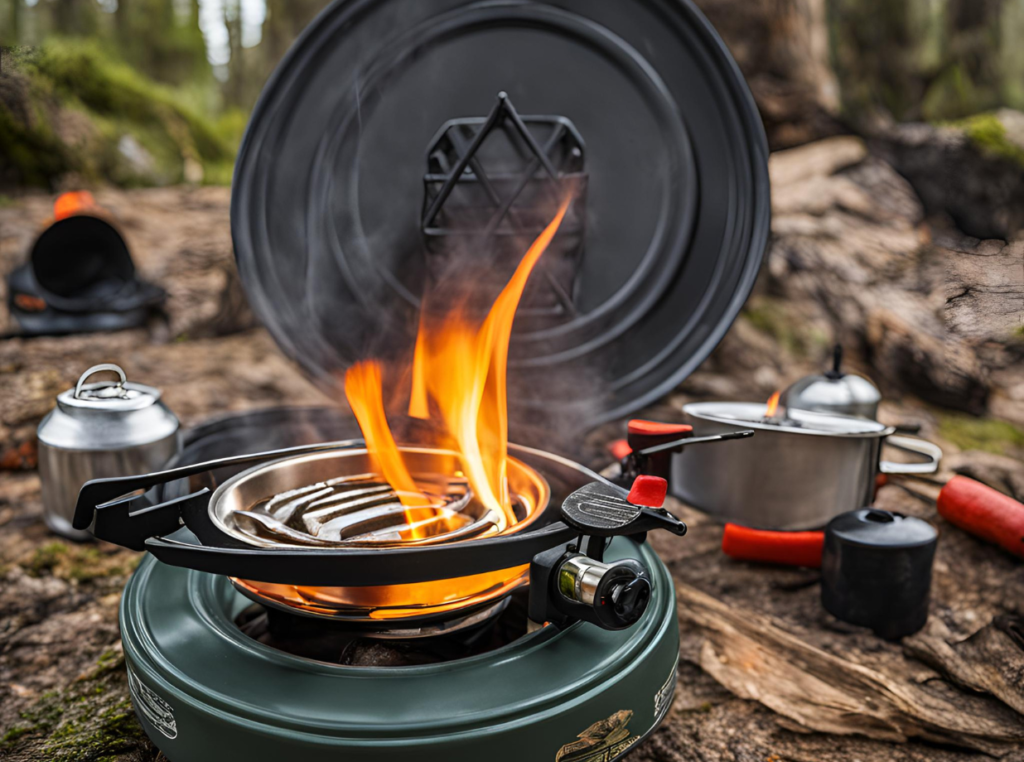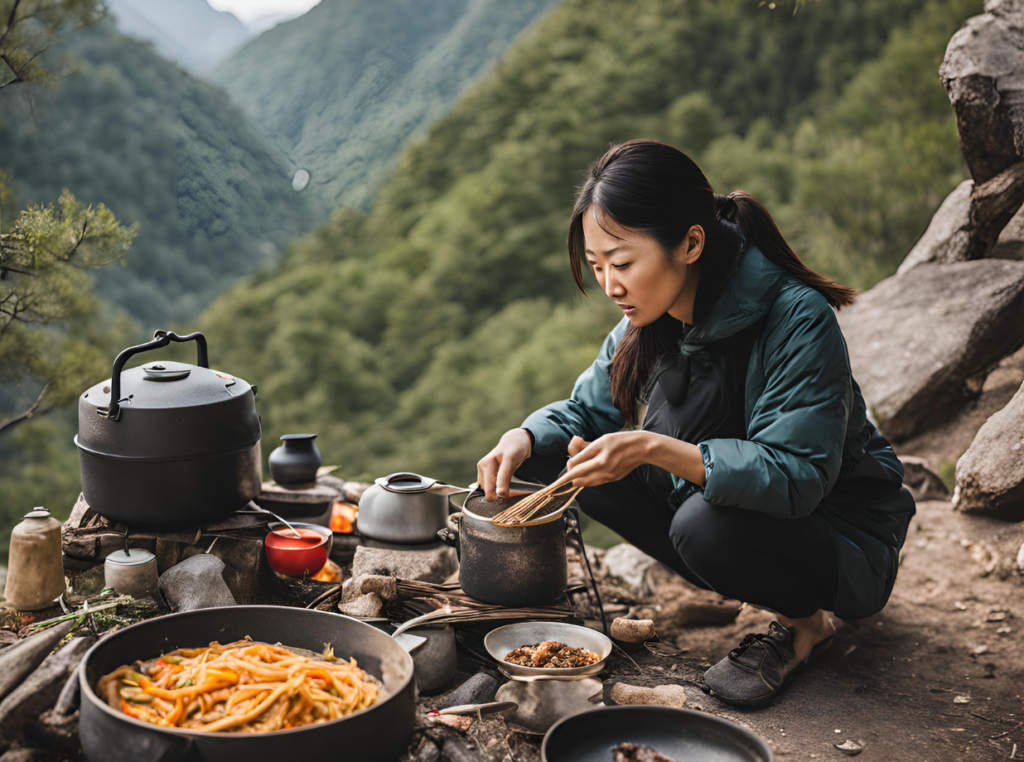Have you ever found yourself in the great outdoors, surrounded by stunning scenery, only to realize that you’ve forgotten the one thing that would bring your camping experience to a level that even Mother Nature would nod approvingly at—a portable stove?

The Urgency of a Good Meal
Picture this: You’re six miles into your hike, stockpiled with trail mix and questionable beef jerky – the kind that might be more akin to shoe leather than actual meat. Your stomach is grumbling like a toddler who has just realized it’s past snack time. Believe it or not, a quality portable stove might just be the key to a happier, more fulfilling escape into the wild—because let’s face it, nothing says “survival” like a lukewarm cup of instant coffee.
Why You Need to Choose Wisely
When it comes to ultralight backpacking, your gear is your lifeline. Each item you pack can mean the difference between a joyous trek and swearing off the entire wilderness forever, while crying softly into a can of cold beans. Portable stoves come in various shapes, sizes, and even colors—much like a fashion show, but instead of catwalks and Vogue, it’s all about boiling water and doing it fast. That’s where knowing your options makes a world of difference.
Understanding Ultralight Backpacking
Ultralight backpacking is an art form that transcends packing a few granola bars and a tent. It’s a finely tuned symphony of reducing unnecessary weight while retaining comfort—think of it as sending all your excess baggage (physically and maybe emotionally) packing.
What is Ultralight?
In less poetic terms, ultralight backpacking means carrying no more than about 10-15% of your body weight. Yes, that’s right! So grab that scale and weigh yourself; if you tip the scales at 200 lbs, your backpack should weigh no more than 20-30 lbs. Sure, you could lose the weight by skipping breakfast for a month or two, but a better strategy involves choosing lighter gear, including your stove.
The Types of Portable Stoves
Before you can find your soulmate of a stove, you need to know what’s out there. Think of it as a very serious dating game, where the stakes are dinner and potentially your sanity. There are various types of portable stoves, each with its pros and cons.
1. Canister Stoves
Canister stoves utilize pre-filled fuel canisters that connect for easy use. They often come with a simple setup—just screw on the canister, light it, and voila! It’s like lighting a match without the fire department needing to show up afterward.
| Pros | Cons |
|---|---|
| Lightweight | Limited fuel options |
| Quick setup | Canister waste |
| Stable cooking platform | Difficulty in extreme cold |
2. Alcohol Stoves
These beauties operate using denatured alcohol, or in layman’s terms—liquid courage for burning things. Alcohol stoves are praised for their simplicity and are usually handcrafted, which makes them perfect if you enjoy pretending to be a lumberjack who can whittle his own spoons.
| Pros | Cons |
|---|---|
| Very lightweight | Longer cooking times |
| Simple design | Not as efficient in cold |
| Liquid fuel is cheap | Less stable |
3. Wood-Burning Stoves
If you fancy yourself a woodland wizard who revels in the flames of nature, then wood-burning stoves could become your best friend. These stoves utilize sticks and twigs—much like those found lying around your rustic backyard—allowing you to become one with the forest while cooking a delightful meal.
| Pros | Cons |
|---|---|
| No fuel canisters needed | Heavier than others |
| Eco-friendly | Requires gathering fuel |
| Fun to use | Limited cooking options |
4. Electric Stoves
Imagine boiling water and frying bacon with the power of technology while camping. Electric stoves can be a real game changer, but you’d be wise to check where you can plug them in. Spoiler alert: the middle of nowhere is generally not an ideal location for searching for a power outlet.
| Pros | Cons |
|---|---|
| Easy to use | Heavier and bulkier |
| Consistent heat source | Requires a power source |
| Great for base camp cooking | Not portable for hikes |
Factors to Consider When Choosing Your Stove
Choosing a portable stove is akin to selecting an outfit for a first date—too much and you overwhelm; too little and you’re giving off serious unkempt vibes. Here’s what to factor in:
Weight
The ultimate buzzkill is finding the perfect stove only to realize you can’t carry anything else because it’s as heavy as a brick. Look for stoves that are truly ultralight—aim for something that weighs around 3 ounces. If you find a stove that doubles as a makeshift weapon for bear defense, it might be time to reconsider.
Size
Can it fold? Is it compact? A stove should easily fit into your backpack without requiring federal approval to be transported across state lines. A good rule of thumb: if your stove has to be strapped to the roof of your car, you might want to rethink that decision.
Fuel Type
The burning question (pun intended) here is what fuel will you want: is it canisters, alcohol, or something that requires kindling as though you are back in prehistoric times? Consider where you are hiking and what you need—making sure the fuel options align with your route.
Cooking Needs
Are you whipping up gourmet meals that would make Gordon Ramsay shed a tear? Or are you more into instant oatmeal and mac ‘n cheese? Consider your cooking ambitions and how they align with the stove’s capabilities.

Cooking Techniques
Once you’ve settled on your stove, it’s time to channel your inner master chef. Here are a few quick cooking techniques to not only survive but thrive in the wild:
Boiling Water
From instant noodles to rehydrated meals, boiling water is the name of the game. If you have a pot with a lid, you can boil water in a manner that would make even a professional chef nod approvingly. Just don’t forget to check if your stove is capable of bringing water to a rolling boil; nobody wants lukewarm ramen.
Frying and Sautéing
If you’ve ever desired to feel like an Iron Chef while cooking under the stars, then frying and sautéing are for you. Look for stoves that can handle woks and skillets for maximum capacity.
Grilling
Take a moment to appreciate how grilling in the wild can elevate your backyard barbecue skills to Michelin-star level. Bring along a lightweight grill grate, and you can have burgers without the need for an actual grill—brother, this is the essence of portable magic.
Baking
Believe it or not, if you’re feeling ambitious, there are even baking options available. Some stoves come with adaptable designs, allowing for everything from banana bread to brownies. Just make sure you have the oven mitts because wildlife doesn’t appreciate your kitchen ineptness.
Safety First: Don’t Burn Down the Forest
As thrilling as it sounds to channel your inner pyromaniac, you must prioritize safety. Here are several crucial safety tips to keep you and your surroundings safe:
Fires Away from Fuel Sources
If it’s flammable, consider it a potential disaster waiting to happen. Always ensure you’re a safe distance from anything that could go boom! If you’re unsure about fuel sources nearby, consult the camp handbook—the written word can often save you from being the reason for a local forest fire.
Know Your Stove
Perform a “pre-flight check” on your portable stove before venturing into the wilderness. Make sure to bring extra fuel, as opting for instant coffee with cold water isn’t as picturesque as it sounds.
Fire Containment
Got firewood? Fantastic! But store it safely away from where you’re cooking. Nobody wants to recreate a scene from a disaster movie due to a misplaced log’s fortuitous placement.
Conclusion: Finding Your Ideal Stove
You’ve now armed yourself with the knowledge to traverse the landscape of portable stoves during ultralight backpacking. It all comes down to weighing your options—literally! As you ponder your choice, remember that a good stove is akin to a supportive partner: it should lighten your load, be there when you need it most, and provide warmth on chilly nights.
So, as you embark on your next adventure, don’t let hunger strike before you’ve dug into your stash of gourmet trail food. Find a stove with whom you connect, and cherish your hike not just for the views, but also for the memories made over a hot meal beneath the stars. Now go forth and cook like you mean it—even if it requires a fork and lots of wishful thinking!



